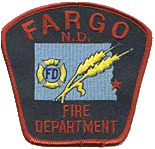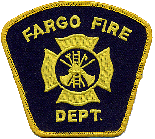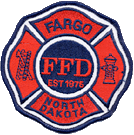Fire Department
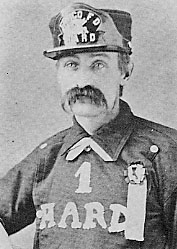
Fargo's first Mayor, George Egbert, and the city's six aldermen first met on April 12, 1875. That day the Mayor appointed Barney Griffin and L. B. Cornwall as Fargo's Fire Wardens. Their primary duties were to patrol the city on the lookout for fire and to keep people clear of danger in case of a serious fire. Fires in the early days were fought with bucket brigades.
On November 20, 1877, the city council passed the first fire ordinance. It provided for a chief engineer (Barney Griffin was appointed), first assistant (Hugh McChesney), second assistant (James Stack), and two fire wardens (Jasper B. Chapinn and Brad Stevens). Also in that year, Fargo's first fire apparatus was selected and delivered on December 29, 1877: a hook and ladder rig from the Babcock Fire Extinguisher Company for $375.
The era of the volunteer fire companies began on December 29, 1877, when the Pioneer Fire Company was recognized by the Council. Unfortunately, the Pioneer Company was never officially organized or chartered and thus was of little value.
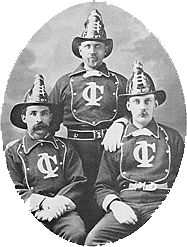
In the spring of 1880, the unorganized Pioneer Fire Company organized itself and changed its name to the Continental Hose Company No. 1. The company was officially organized and chartered on October 19, 1880.
The Fargo Hose Company No. 2 was formed in 1882 but lasted less than two years before being dissolved. The Yerxa Hose Company No. 3 was established on December 7, 1883. The Yerxa were named for Woodford A. Yerxa who was mayor at the time and owner of a grocery store on the southwest corner of Broadway and NP Avenue. The company was composed of young Fargo businessmen and is reported to have been the most dedicated and effective of Fargo's volunteer fire companies.
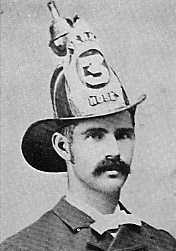
Fargo continued to be served by volunteer fire fighters until 1903. At that time the city decided to establish a paid, professional fire fighting department. J. W. Sutherland (of the Continentals) was appointed by Mayor W. D. Sweet as Fargo's first professional Fire Chief. Sutherland commanded three men who drove the Yerxa's, Continental's, and the Rescue Hook and Ladder's rigs. The paid firefighters worked with the volunteers.
By the end of the following year, 1904, the Fire Department had grown to ten men and the volunteer force ceased to exist. The professionals earned their $60 per month and worked hard for it. They were on duty 24 hours per day, 7 days per week. It was not until 1919 that the fire fighters were allowed one hour off duty for each meal—breakfast, lunch, and dinner. That same year, the Fire Department instituted a two-platoon system with two shifts of fire fighters working a 10-hour day and 14-hour night shift, platoons alternating shifts every two weeks. This was later changed to 24 hours on duty followed by 24 hours off duty. In another big change, 1919 was the last year for horse-drawn fire equipment.
Postcards from about 1910 showing the fire equipment in use at the time can be found on the pages about Roberts Street and the old library.

In the years since it became a professional fire fighting force, the Fire Department has grown in size and has become proactive in fire prevention. At the turn of the 21st century, the Fargo Fire Department has a staff of 75 firefighters, four assistant chiefs, three inspectors, fire marshal and chief. Fargo is one of only four fire departments in North Dakota that is paid, all the others are volunteer. The other paid departments are in Grand Forks, Bismarck and Minot.
